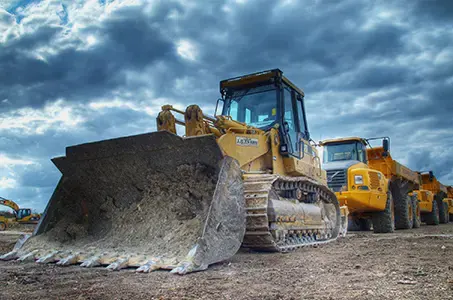
Celebrating the 76th anniversary of the founding of the People’s Republic of China and the Mid Autumn Festival!
Wishing all Chinese around the world a happy holiday!
Wishing all Chinese around the world a happy holiday!
01 Advantages of Ceramic BladesHard alloy cutting tools encounter...
Dry machining is one of the important development trends...
~Abandoning the complexity of multiple cutting tools, only one...

The cutting tools in the mechanical processing industry will face various wear reasons during the cutting process. These reasons mainly include abrasive wear, cold welding wear, diffusion wear, and oxidation wear. Abrasive wear is caused by the grooves drawn on the surface of the tool by tiny particles with extremely high hardness in the processed material. This phenomenon can occur on various cutting surfaces, especially during low-speed cutting. Due to the low cutting temperature, abrasive wear becomes the main problem. Cold welding wear is caused by strong pressure and friction between the workpiece, cutting, and tool during cutting, and is generally more pronounced at moderate cutting speeds. Diffusion wear refers to the mutual diffusion of chemical elements between the workpiece and the tool during high-temperature cutting, which changes the composition and structure of the tool, thereby exacerbating tool wear. Finally, oxidative wear is caused by the high temperature generated during the cutting process, which leads to a chemical reaction between the tool material and oxygen in the air. These reasons for wear and tear require us to have a deep understanding and take corresponding solutions.
As the temperature increases, the surface of the tool will undergo an oxidation reaction with oxygen in the air, generating softer oxides. These oxides are subjected to friction by chips during the cutting process, resulting in wear, known as oxidative wear. For example, in the temperature range of 700 ℃ to 800 ℃, oxygen in the air will oxidize with cobalt, carbides, titanium carbide and other components in hard alloys, generating softened oxides. Similarly, when the temperature reaches 1000 ℃, the PCBN tool material will undergo a chemical reaction with water vapor, further exacerbating the wear of the tool.
1) Select appropriate tool materials and geometric parameters based on material characteristics to ensure welding and grinding quality, and control cutting parameters.
2) Carefully select the type and grade of tool materials based on the characteristics of the processed materials and parts. On the basis of ensuring sufficient hardness and wear resistance, the tool material must have a certain degree of toughness.
3) Reasonably set the geometric parameters of the cutting tool. By adjusting the front and rear angles, main and auxiliary angles, and blade inclination angle, ensure that the cutting edge and tool tip have sufficient strength. Grinding negative chamfers on the cutting edge is an effective measure to prevent tool breakage.
4) Ensure the quality of welding and grinding. Avoid various defects caused by improper welding or grinding. For the cutting tools used in critical processes, their surface should be improved by grinding and carefully inspected for cracks.
5) Reasonably choose cutting parameters. Avoid excessive cutting force and high cutting temperature to prevent tool damage.
Choose grades with higher bending strength and toughness. In addition, unreasonable selection of tool geometric parameters, such as excessive front and rear angles, may also lead to blade breakage. To solve this problem, our R&D department has effectively improved the service life of the cutting tools by reducing the front and rear angles, using negative blade inclination angle, reducing the main deviation angle, or using negative chamfer and blade edge arc for grinding. Customer feedback shows that the service life of the cutting tools has been increased by 15% to 22% compared to the previous ones.
Wishing all Chinese around the world a happy holiday!
01 Advantages of Ceramic BladesHard alloy cutting tools encounter...
Dry machining is one of the important development trends...
~Abandoning the complexity of multiple cutting tools, only one...

FUJI Tools was founded in 1992 with a business policy dedicated to CNC machining center peripheral tools and cutting tools. In recent years, the company has invested more resources to establish a comprehensive operating environment and advanced manufacturing equipment in response to the cutting market demand, providing higher product quality and improved processing efficiency for mechanical processing industry workers.
Xingtan , Shunde ,Foshan City,Guangdong,China 528303
fujicn@jsh-fujitools.com
86-138 2276 9081